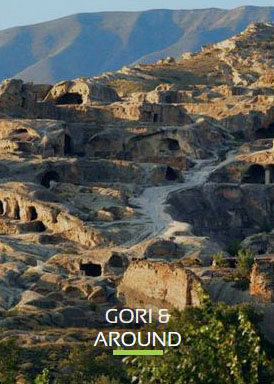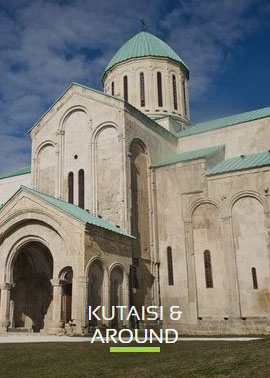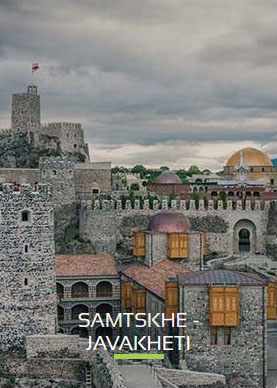A masterpiece hailing from the Early Middle Ages, Svetitskhoveli has been designated a UNESCO World Heritage Site. Currently, it holds the distinction of being Georgia's second-largest church structure, trailing only the Holy Trinity (Sameba) Cathedral in Tbilisi. Renowned as the resting place of Christ's mantle, Svetitskhoveli has stood as a prominent Georgian Orthodox church for centuries and remains a highly revered spiritual destination within the region. Its current form, crafted by the medieval Georgian architect Arsukisdze, was finalized in 1029, though its historical roots stretch back to the early fourth century.
Svetitskhoveli is considered an endangered cultural landmark, having survived through various challenges. Unfortunately, numerous invaluable frescoes suffered loss as a result of being whitewashed under the Russian Imperial authorities.
According to Georgian hagiography, during the 1st century AD, Elias, a Georgian Jew from Mtskheta, was present in Jerusalem during Jesus' crucifixion. Acquiring Jesus' robe from a Roman soldier at Golgotha, Elias transported it back to Georgia. Upon his return to his hometown, Elias encountered his sister Sidonia. Tragically, Sidonia passed away upon touching the robe, overwhelmed by the profound sanctity of the artifact. The robe clung to her grasp, and consequently, she was laid to rest with it.
The spot where Sidonia found her resting place alongside Christ's robe remains preserved within the Cathedral. Subsequently, an immense cedar tree sprouted from her grave. St. Nino, in her efforts to construct the church, instructed the felling of the cedar, fashioning seven columns from its wood for the foundation. Curiously, the seventh column possessed mystical properties, ascending into the sky on its own accord. After an entire night of fervent prayer by St. Nino, the column descended to the ground. It was further believed that this enchanted seventh column exuded a sacred liquid with the power to heal all manner of ailments.
In the Georgian language, "sveti" translates to "pillar," while "tskhoveli" signifies "life-giving" or "living." Hence, the cathedral’s name. An illustrative depiction of this event is situated on the second column to the right upon entering.
The architectural design of the existing Svetitskhoveli Cathedral, dating back to approximately 1020, is rooted in the cross-dome style of church architecture. Originating in Georgia during the early Middle Ages, this style gained prominence after Georgia's political consolidation under Bagrat III (978-1014). Notably, the distinguishing feature of this style is the placement of the dome across all four sides of the church, designed to optimize acoustics. Over the centuries, the cathedral's dome has undergone multiple reconstructions to maintain the church's structural integrity.
The primary stone employed in constructing the Cathedral boasts a sandy yellow hue, complemented by accents. Around the apse window, a red stone is utilized, while the 17th century contributed the green stone adorning the cupola's drum.
A legend surrounds a relief sculpture on the external northern wall.. This carving portrays a right arm and hand grasping a chisel—the emblem of the stonemason—with an inscription declaring: "The Hand of Arsukidze, servant of God, may forgiveness be upon him." A narrative propagated by a renowned Georgian writer Gamsakhurdia weaves around this sculpture, although no documentary evidence supports it. According to this account, a priest who had previously acted as a patron and mentor to Arsukidze harbored such jealousy towards the architect's achievements that he influenced the king to sever Arsukidze's right hand. This cruel act aimed to ensure that Arsukidze would never again have the capacity to create a masterpiece rivaling or surpassing Svetitskhoveli.
Once adorned with an array of medieval frescoes, the interior walls of the cathedral have experienced significant loss over time. While most of the icons within date back to the 20th century, some are replicas of older icons and frescoes originating from various churches across Georgia.
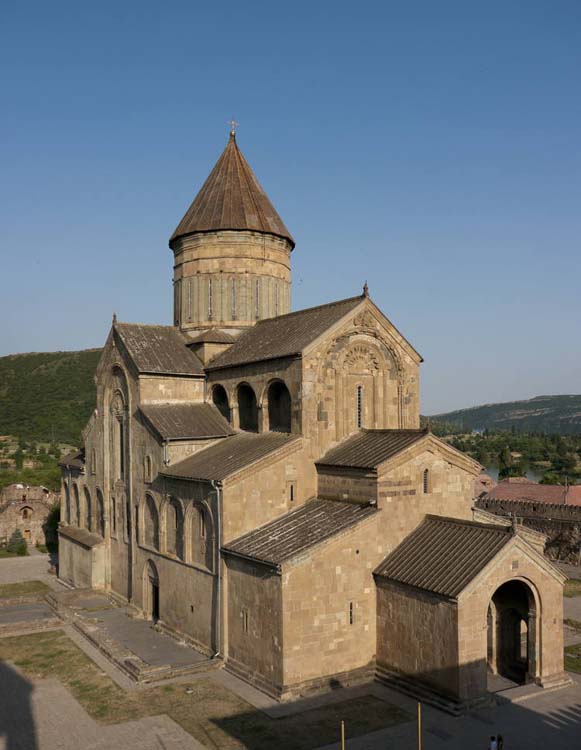
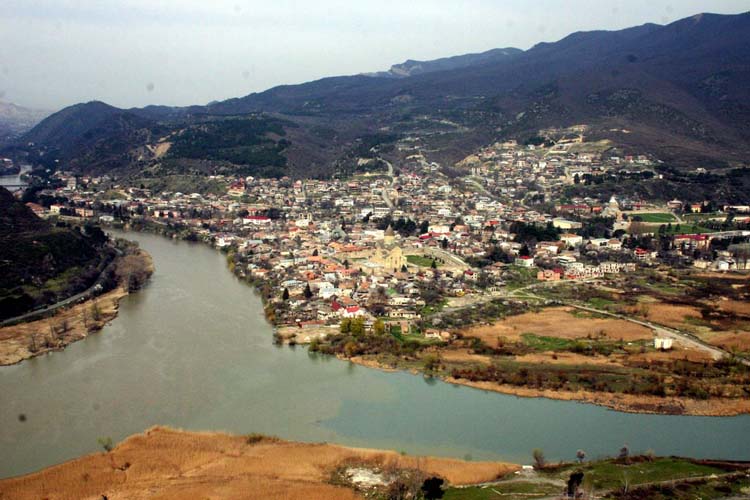
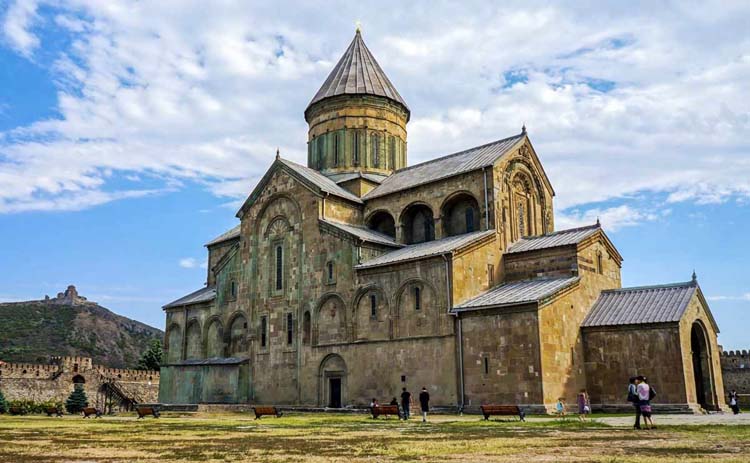
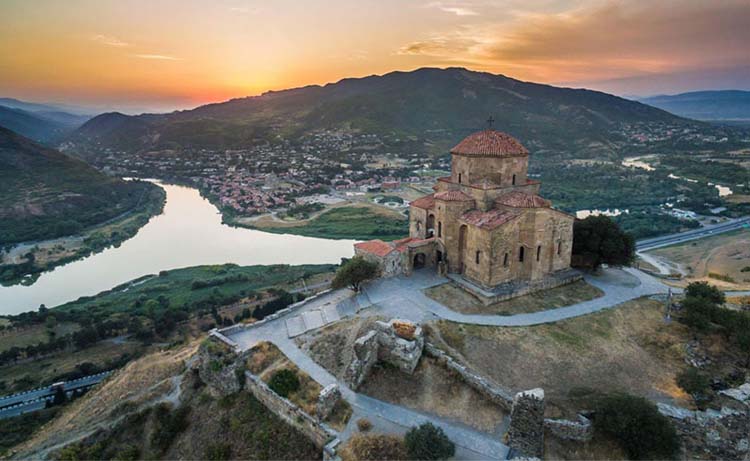
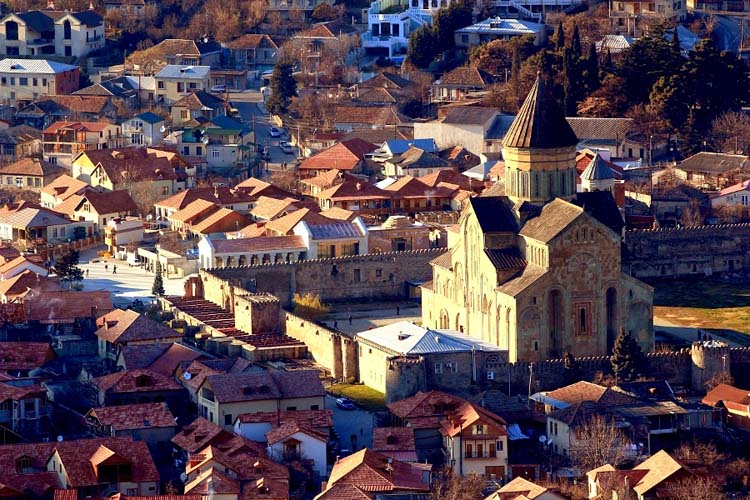
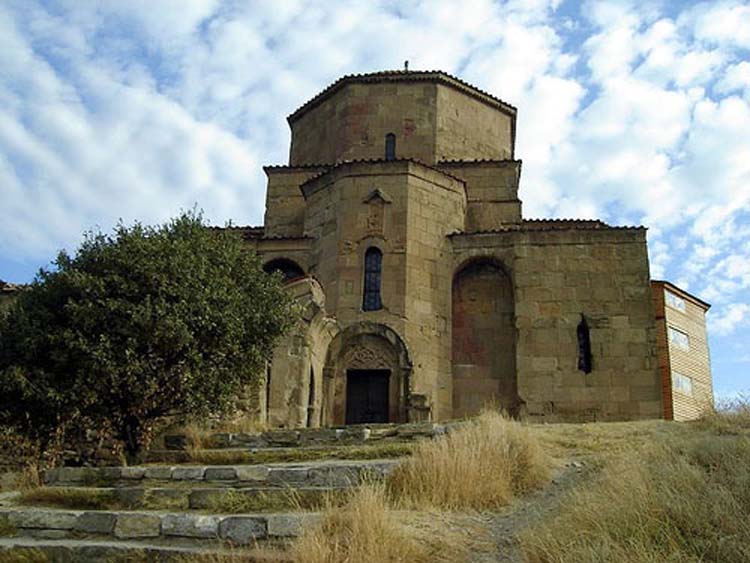


 ქართული
ქართული
 Русский
Русский


